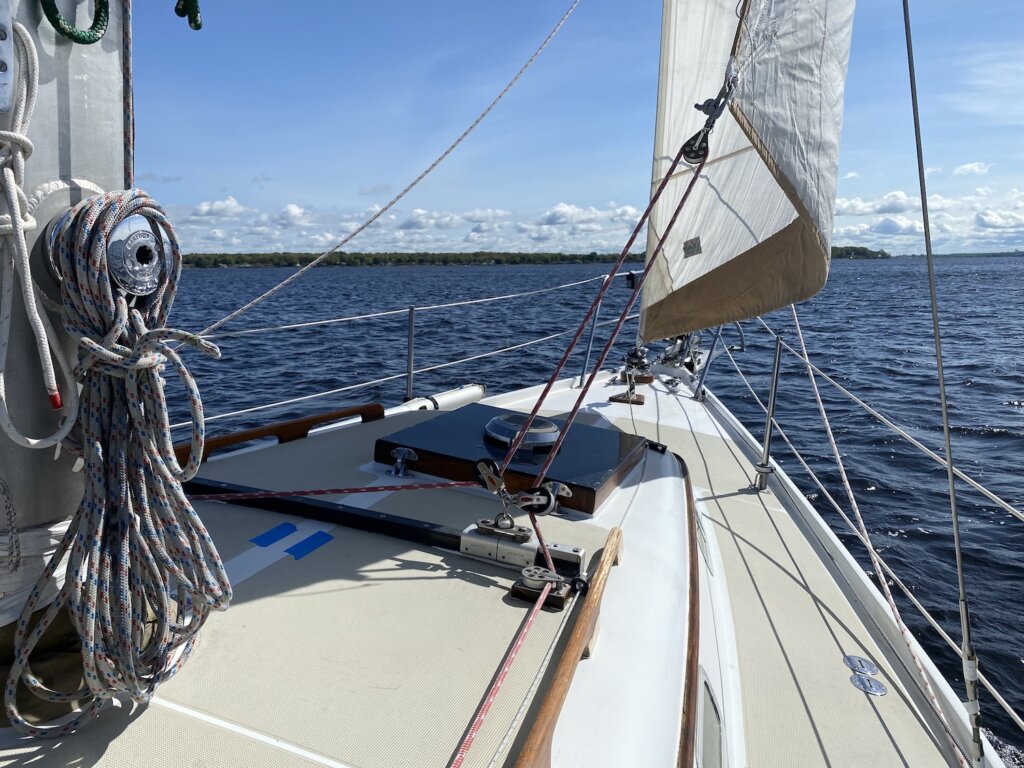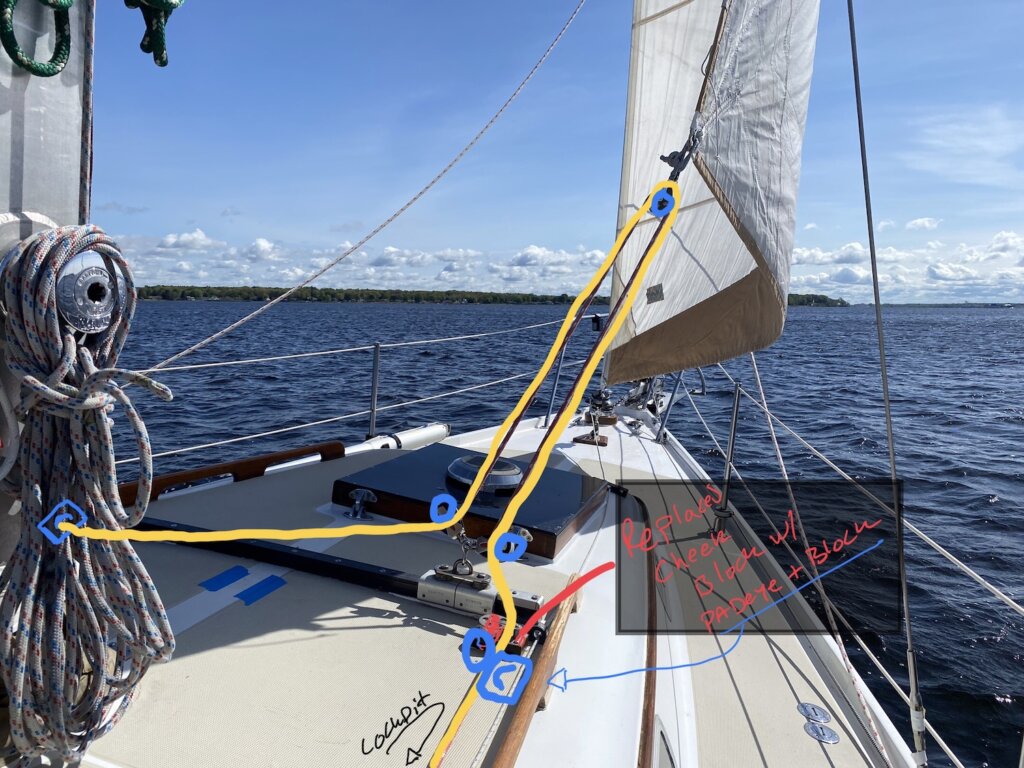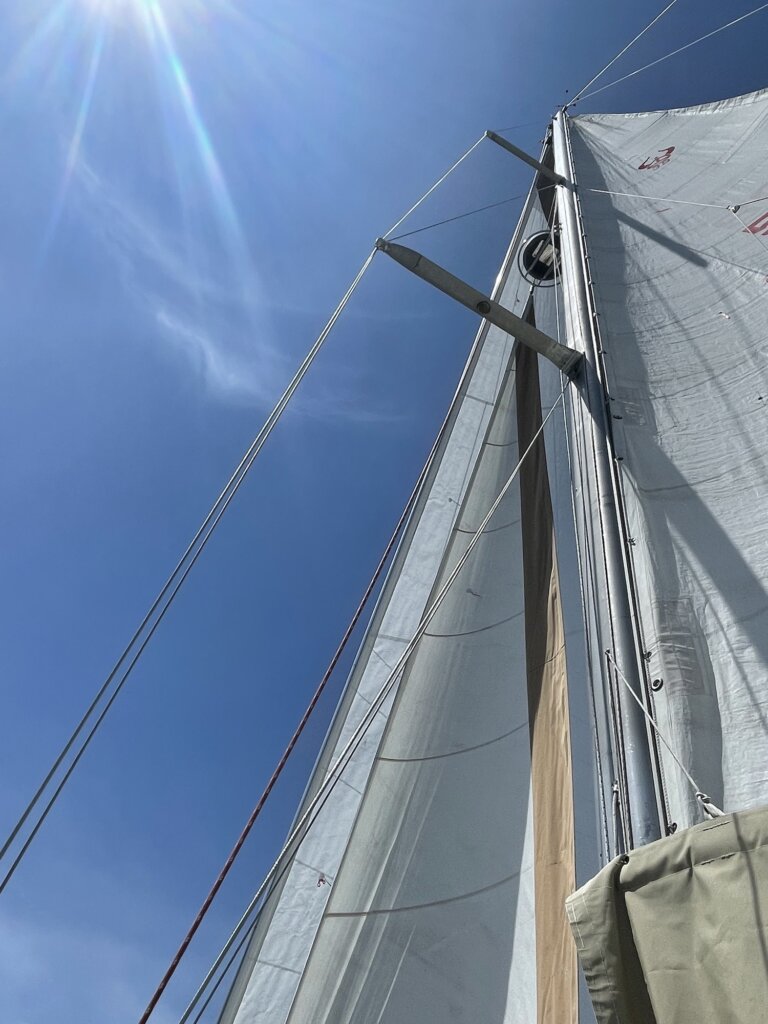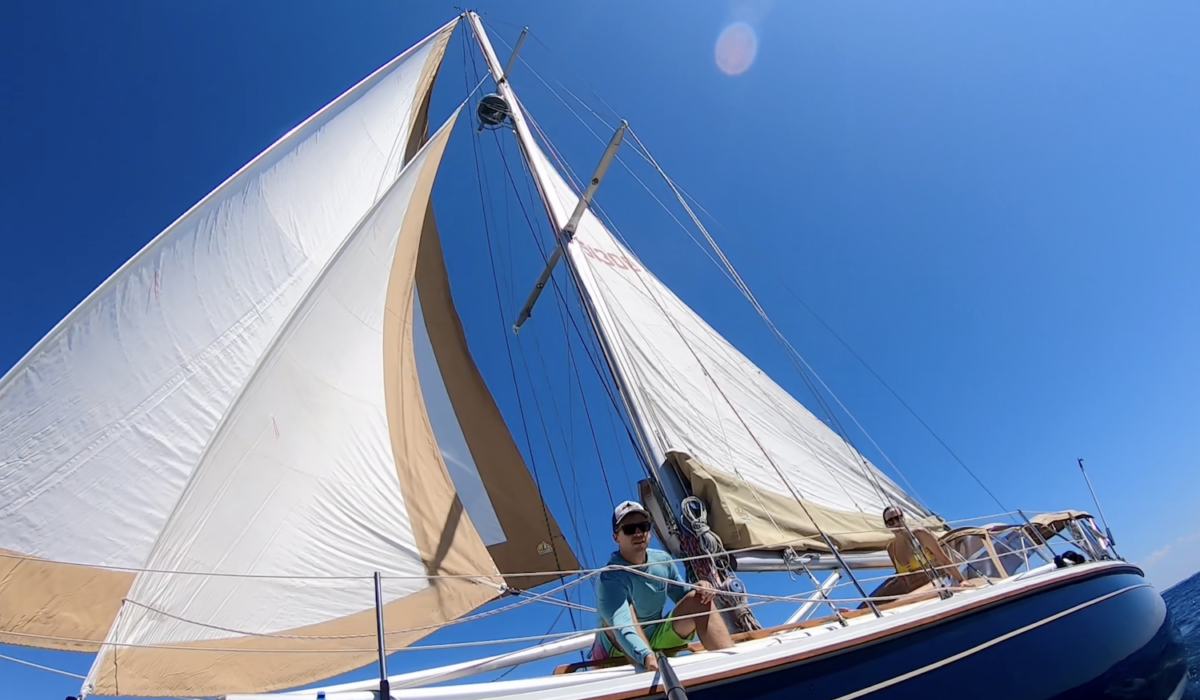Resande’s original sail plan included a Staysail, and it was indeed self-tacking but included a bulky boom that swept across the deck. To achieve a cleaner and simpler deck, we wanted to figure out a way to keep the self-tacking setup, but without the boom which provided structure and shape to the sail. The boom would also violently whip around when furling the staysail and send vibrations through the boat.
I was surprised how difficult it was to find forums that showed how to accomplish this. There were some that talked about how to add a boom, but most of the keyboard warriors and racing enthusiasts decried the idea that it would lead to suboptimal sail shape. As a cruiser, I’m less concerned about perfect sail shape (which ended up not even being an issue) and the benefits of removing a 14 foot aluminum pole from the deck far exceeded downsides.
With the boom, we did have a staysail traveler on the cabin top, which, worked similar to a mainsail track. The true issue we had, was when we removed the boom, the track became useless since sheeting directly through the track would result in competing forces. Back to the mainsail comparison, you have control of the traveler from port to starboard with a dedicated line. You technically could do this with the staysail traveler, but then it wouldn’t be as self-tacking, and would add unnecessary rigging components in a process we’re trying to simplify.
After countless hours of trying to find a solution, I finally found it on the Harken website of all places. Their site showed four (now three) different commonly used self-tacking setups:

- Standard Self-Tacker: you’ve got a sheet going forward to near the bottom of the furling drum, then back to a block on your traveler car which is led back forward to the clew of your sail.
- This works by creating a pivot point forward so your traveler can tack without the lateral forces trying to self-center on the track. The closer the forward block is to the traveler, the more the traveler car will want to be centered under load which will greatly limit your sheeting angles.
- The downside is this has a very long sheet going from the cockpit to the base of the sail, then back to the traveler, then up to the clew. This zig-zag will sweep the deck just like the original staysail-boom setup (it’s actually pretty much the same)
- Self-Tacker on a Boom: is basically the same as the standard self tacker, and the original equipment on our Ericson 39B. It is bulkier on your deck, but the benefit is you have more control of the staysail shape. You have control of the sheet and boom with different lines led to the cockpit.
- Sheet up the mast: this one seems to have been removed from the Harken website, but it uses the same principle as the Standard self-tacker. Instead of running the sheet all the way forward however, you run it up the mast then down through the traveler block, then forward to the clew which results in a cleaner deck. This would have been our backup plan if the next option didn’t work
- 2:1 Self-Tacker: the simplest and cleanest (in my opinion) variation, the 2:1 self tacker rides on the sheet itself laterally during the tack. The key difference is the end of the sheet goes to a fixed point instead of the clew. The clew has a block that provides a low resistance path between port and starboard.
The 2:1 Self-Tacker is the one we ended up using on our boat. It accomplished our goal of cleaning up the deck, and it simplified our running rigging in the process. What we found in practice, is our sheeting angles were as good as they were with the boom, though we have less control than we did with two separate lines.

More options, for offshore passage-making Now that we have the boom out of our lives, rigging it like this also leaves the option to run sheets back to the cockpit similar to how you would the headsail. We could want to do this for two reasons I can think of.
- On a long passage, when you’re on the same tack for days potentially, the self tacking feature isn’t that important.. It could give you more control of sail shape.
- More importantly, the self-tacking setup would make it impossible to back the headsail when trying to heave to under staysail only. I could see a scenario where we’re running a reefed main and staysail and want to heave-to. I would likely set up the staysail like this on a long passage for the additional options it would provide.

Overall, we’re very happy with our decision to remove the boom. I would highly recommend trying it out and testing it with the 2:1 self tacker (minimal rigging required). Let us know you’re questions/comments below I was surprised how difficult this was to find an answer on when trying to research how to do this.
